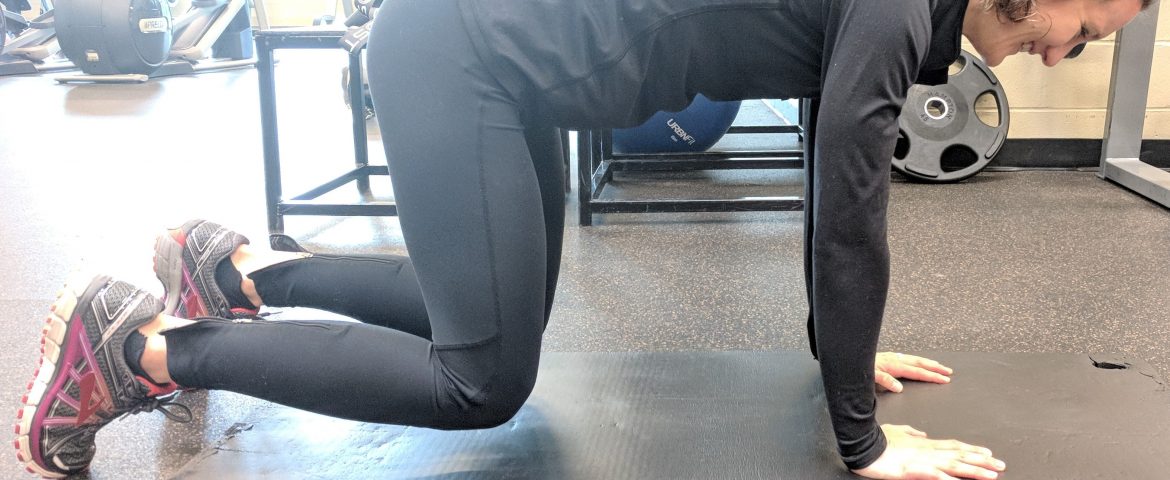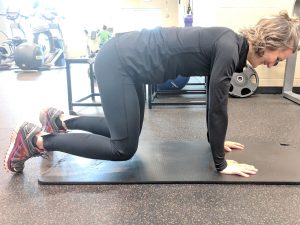There are a lot of myths and misinformation out there about core training and how to properly train your core. Before we can get into all that we have to define what the core is. You talk to 10 different trainers and coaches you might get 10 different answers to what the core is (is why I am not a big fan of the term, what matters is coach and athlete are on the same page to what it is). One might say its everything between the ribs and the hips, another might say everything from the top of the shoulders to the bottom of the hips, someone else might say its just the abdominal muscles. For this article and with my clients its everything from the diaphragm to the pelvic floor, front, sides and back. I think of it like a box if any part of that box becomes weak then under pressure it will collapse.
Why do we do core training? There are a few reasons we train the core. First, we want to control the lumbo-pelvic hip complex (low back, pelvis and hips). We want control of this area, doesn’t necessarily have to be in a neutral position. Some athletes, depending on the demands of their sport, don’t want neutral they want to be able to control movement and maintain the ability to stabilize and support during movements. This control is one of the most important things when it comes to athletes who strike things, like MMA fighters, golfers, baseball etc.
Another reason is because we want to be faster, stronger and more explosive. This is how a guy like Dustin Johnson can hit for more distance then just about anyone on tour and still maintain the accuracy to be one of the top players on tour each year and play injury free. Having a strong stable core will allow you to get better shoulder rotation and improved spinal mobility.
The primary function of the core is to prevent movement and transfer force from the lower body to the upper body; such as, a baseball player swinging a bat, boxer throwing a punch, golfer swinging a club. When athletes use the abdominal muscles and core to produce force this leads to low back pain and altered movement patterns.
Anatomy of the core
The diaphragm
Simply put the diaphragm is the muscle that helps us breathe. If the diaphragm is poorly positioned then it will not be able to perform its primary function, so it is important to train it to control respiration. The attachments for the diaphragm are on the sternum and down on L1-L3 vertebra. Being in poor posture will negatively affect how it will function and limit your ability to breathe. This will also limit your bodies ability to move and be relaxed in any position. it maintains a parachute shape and forms the top of the “box”. Poor posture it constricts the diaphragm and doesn’t allow it to properly do its job. What happens when you are locked into a poor posture and stuck in this “ribs flared” position? other muscles will have to control the breathing, such as the chest, neck or shoulders (common areas of extra tension in many people).
Therefore, learning to breathe is so important, it not only helps with posture but also has an impact on the nervous system. Planks are a great exercise but how much good does it really do when you spend 3 minutes holding a strong posture (assuming you are doing them properly) only have every other breath you take all day pull you right back out?
Pelvic floor
The pelvic floor is opposite the diaphragm, it has a similar dome shape to it and moves in the same fashion as the diaphragm. We live in this extended posture where the pelvic floor and diaphragm are not facing each other. Leaving the pelvic floor in this extended or weakened position and not allowing it to do its job which then also leaves the diaphragm constricted and unable to perform its job
To give you an idea of how these muscles work together; imagine (or try it, it’s safe for kids) you have a water balloon in your hands. Your right hand is the diaphragm on the top and the left hand is the pelvic floor on the bottom when they are facing each other, and you inhale the right hand will push down and the left hand will also go down with it. If you are out of posture and take your inhale, then the right hand will push down but the left hand will push back against it.
Transverse abdominus
The transverse abdominus (TVA) attaches to the ribs and the hips like the internal obliques. Its main function is to help close down the front of the abdomen, it will help pull the bottom the ribs down and prevent the “rib flare” and also pull up on the front of the hips. When you hear people talk about “drawing in” this is the muscle they are referring to activating, but I believe this muscle is better used with a good strong exhale.
Internal obliques
Like the TVA the internal obliques attach to the ribs and the hips. These muscles are designed for posture control, and not so much for movement like side bending or rotation. The internal obliques and TVA are the muscles that close down the front of the abdomen. A good strong exhale will activate these muscles and lock the body into a strong posture.
There are other muscles involved with the core such as the Multifidi which are sit along the spine and help with segmental stability with the vertebra. Then there are the muscles of the external core. The external obliques that will help with posterior tilt of the pelvis, helping lock the pelvis back underneath you. This will put you into a strong posture which will allow you to get better shoulder rotation while protecting your low back. The rectus abdominus (peoples favorite muscle to work), is the last line of defense on the outer part of the core. Its there to hold everything together. The rectus abdominus is over worked in most people which is what leads to a lot of low back pain, it starts doing the job of all the muscles underneath it. Then the spinal erectors that extend the spine, but we need the abdominal muscles to off set these muscles. The last we will talk about is the serratus anterior, although not between the diaphragm and the pelvic floor when the core muscles are properly engaged the serratus will help pull the rib cage back and help keep it in alignment.
Myths of core training
Myth 1: All you need to do is crunches, side bends, sit ups and leg raises. You see this all the time in the gym, people laying on a bench or the floor doing crunches at the end of their workout (or in some cases the only part of their workout besides cardio).
The truth is exercises like crunches etc. are bad for the lower back, they put more stress on the discs in your lower back then they are designed to handle. Dr. Stuart McGill did a research study where he took a pig spine and put it in a machine that simulated the motion of a crunch and after a number of repetitions (the number wasn’t given in the study) the discs ruptured. Some people have taken that too far and have said that all spinal flexion is bad, the truth is that loaded spinal flexion is bad.
- On all fours position; knees under the hips and hands under the shoulders
- Tuck the pelvis slightly and reach long with the arms
- Pick up knees 1 inch off the ground
- Hold this position throughout
- Perform 5 breaths; full inhale through the nose and long exhale through the mouth
Myth 2: All you need is the big lifts; squats, bench press and deadlift. A lot of coaches think that all anyone needs is the stuff they do, powerlifters think all you need are 3 exercises, or Pilates people will say they have the right answer. The truth is there is no one way to reach your goals or improve your swing or performance.
Solution: There are many ways to train the core, while the big 3 lifts do help improve strength in the core there are many exercises that will help strengthen the core and improve your ability to perform any exercise. One of my favorites is the core engaged deadbug.
- Attach a band to an anchor above your head
- Lay on your back with feet flat on the floor
- Take a full exhale, reach long through the arms and pull the band down towards you’re hips
- Reach one heel towards the opposite wall
- Lower to the ground as much as you can while not allowing the ribs to pop up or the low back to come off the ground
- Return to starting position
Myth 3: What works for me will work for you. Many people will try to sell you their app or program with what they did to get a 6-pack or whatever, the truth is that most of them are selling the same or similar program that may or may not work for you. These programs are not designed for you they are designed for anyone to do.
Solution: Work with a coach who will do an assessment to see what you need based on your goals and design a program that will get you to reach your goals. There are so many different exercises out there that it can be confusing what will be the best for you based on where you are in your training.
Myth 4: People still think core training is just something you do at the end of your workout. Also, you or someone you know has probably also said I will do some core training when I get home. Except who really does these exercises when they get home?
Solution: Perform a couple core exercises as part of the warm up to get everything engaged, then focus on keeping a strong posture throughout the workout. Then you can finish with another core exercise towards the end of the workout.


